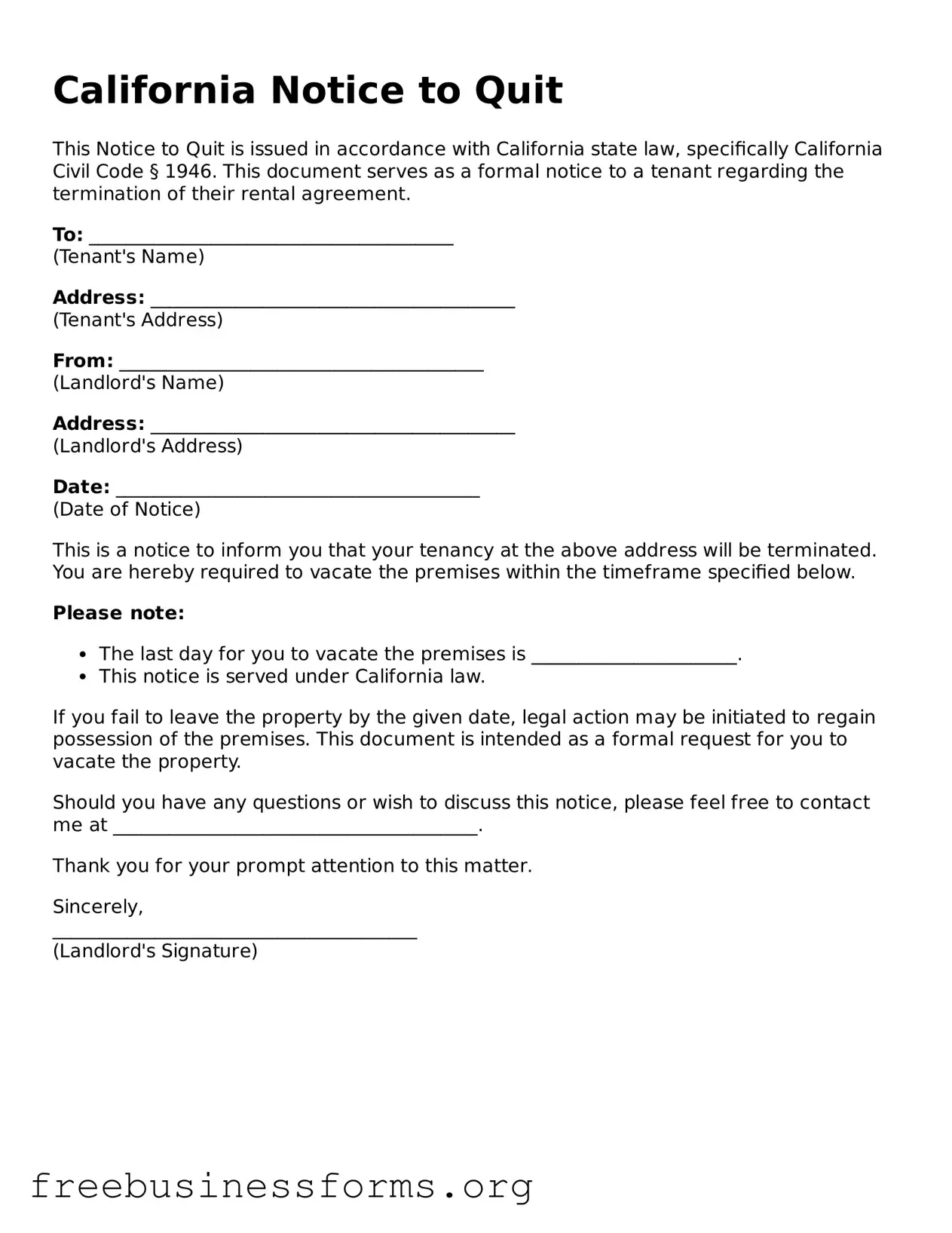California Notice to Quit
This Notice to Quit is issued in accordance with California state law, specifically California Civil Code § 1946. This document serves as a formal notice to a tenant regarding the termination of their rental agreement.
To: _______________________________________
(Tenant's Name)
Address: _______________________________________
(Tenant's Address)
From: _______________________________________
(Landlord's Name)
Address: _______________________________________
(Landlord's Address)
Date: _______________________________________
(Date of Notice)
This is a notice to inform you that your tenancy at the above address will be terminated. You are hereby required to vacate the premises within the timeframe specified below.
Please note:
- The last day for you to vacate the premises is ______________________.
- This notice is served under California law.
If you fail to leave the property by the given date, legal action may be initiated to regain possession of the premises. This document is intended as a formal request for you to vacate the property.
Should you have any questions or wish to discuss this notice, please feel free to contact me at _______________________________________.
Thank you for your prompt attention to this matter.
Sincerely,
_______________________________________
(Landlord's Signature)
